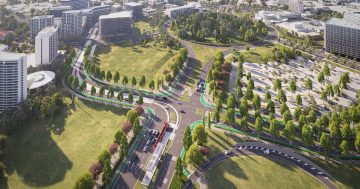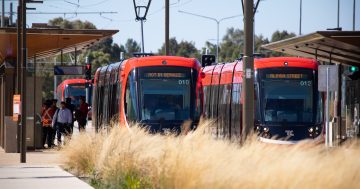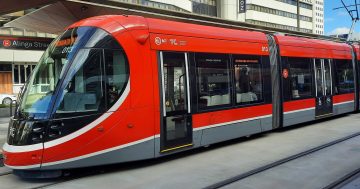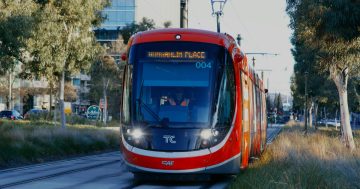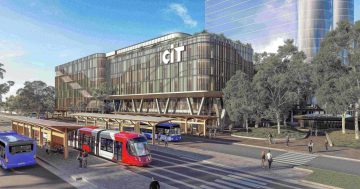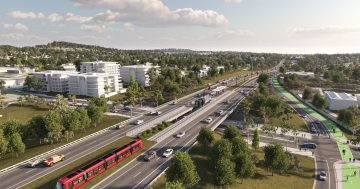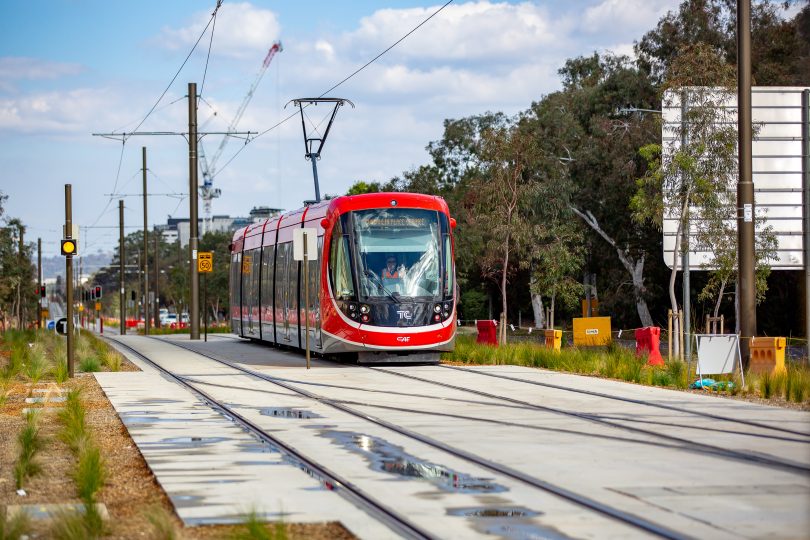
Light Rail Stage 1 project was delivered largely on time and under budget. Photo: George Tsotsos.
Minimising disruptions to business and traffic, coordinating better with other agencies and retaining a skilled workforce are key take-outs from a report on the delivery of Light Rail Stage 1 between the City and Gungahlin released by the ACT Government.
The report confirms the project was delivered largely on time and under budget, but acknowledges lessons learned that need to be applied to further stages.
The final cost of construction was $675 million, $108 million under the design and construction cost estimated in the project’s approved business case of $783 million, and about $32 million less than the project’s anticipated design and construction cost at contract signing ($707 million).
The Benefit Cost Ratio increased from 1 : 2 to 1 : 3, which the Government says could be improved even further as future benefits are realised.
The Territory held a construction-phase contingency of $117 million, of which $85 million went to Canberra Metro for their claims during the project and modifications to the project’s scope.
With Stage 1 not starting operation until April 2019, four months later than agreed, Canberra Metro was not granted an extension to the 20-year operating and maintenance period, foregoing about $21.9 million of availability payments in the 2018-19 financial year.
Under the terms of the settlement of outstanding claims reached with Canberra Metro, $245,000 a year, indexed, is to be paid to Canberra Metro due to increased operations and maintenance costs.
The report lists a large number of benefits that are on track or still to be assessed including development along the corridor, higher property prices and a superior travel time of around 24 minutes compared to that of cars.
It says that the average Gungahlin to City morning peak car travel time by 2031 would be 42 minutes with light rail but 57 minutes without.
While the project, which employed about 5000 people, has been deemed a success, it caused considerable pain to business impacted along the route.
A survey of businesses was told that the project could have strategically spread works over a longer period but limited to smaller areas; provided greater certainty about the timing and extent of road closure, noisy activities and delays; assisted with better wayfinding signage for customers; and practical measures like window and façade cleaning where construction activities generated excessive dust.
The Government says it will incorporate these findings when planning for future construction activities.
The report also says that delivery agencies need to be aware of other Territory projects nearby and the potential for extended or excessive construction disruption to the community and business.
“Early engagement with other Territory directorates and agencies to understand planned projects and co-ordinate them in a manner that minimises the disruption to the community and business is critical,” it says.
Retaining a skilled workforce and providing local work opportunities were also identified as issues, with the report saying that the Government should stay in touch with local subcontractors in advance of future stages of light rail.
Acknowledging the impact ongoing traffic disruptions had on commuters, the report says that contractors need to be more flexible and be held to account to minimise street and lane closures, and the public kept informed.
Although the report says the Public Private Partnership model of delivery has proven beneficial, a PPP approach may not necessarily be the optimal approach for all future stages of light rail, and each project stage must be considered in its individual context.
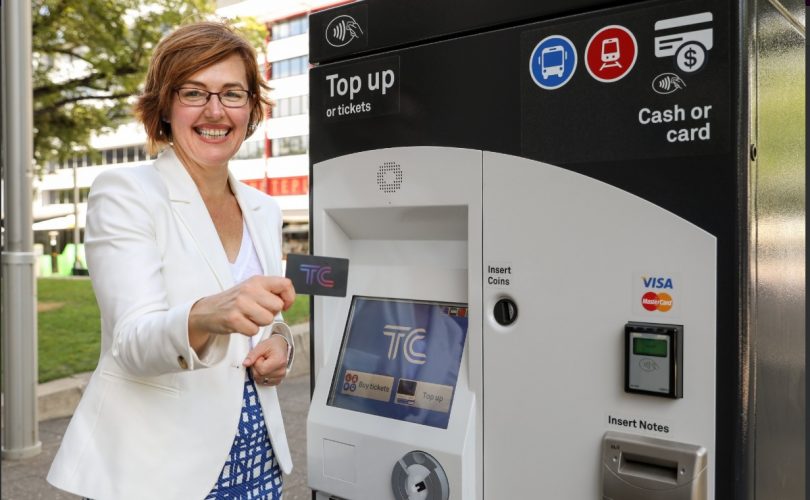
Meegan Fitzharris said the project had many challenges as well as successes to overcome. Photo: Transport Canberra.
Minister for Transport Meegan Fitzharris said the project had many successes as well as challenges to overcome.
“It is important to be open about these challenges as they present valuable lessons that will not only inform future stages of light rail, but infrastructure development more broadly,” she said.
The work would now continue with the second stage of light rail, she said.
“The funding delivered in this year’s Budget will allow us to continue the important planning and design work that is needed, including work on a new Woden Bus Interchange that will integrate with light rail, to ensure the project keeps moving ahead while we progress route design and approvals,” she said.
“We are also in the process of referring Stage Two for assessment under the Federal Environment Protection and Biodiversity Conservation Act – a key step to clarifying heritage and environment considerations for the project.
“We look forward to working with the Commonwealth Government, the National Capital Authority and the community more broadly as this work progresses.”
Further work would take place over the next 12 months to assess the benefits of light rail for Canberra.












